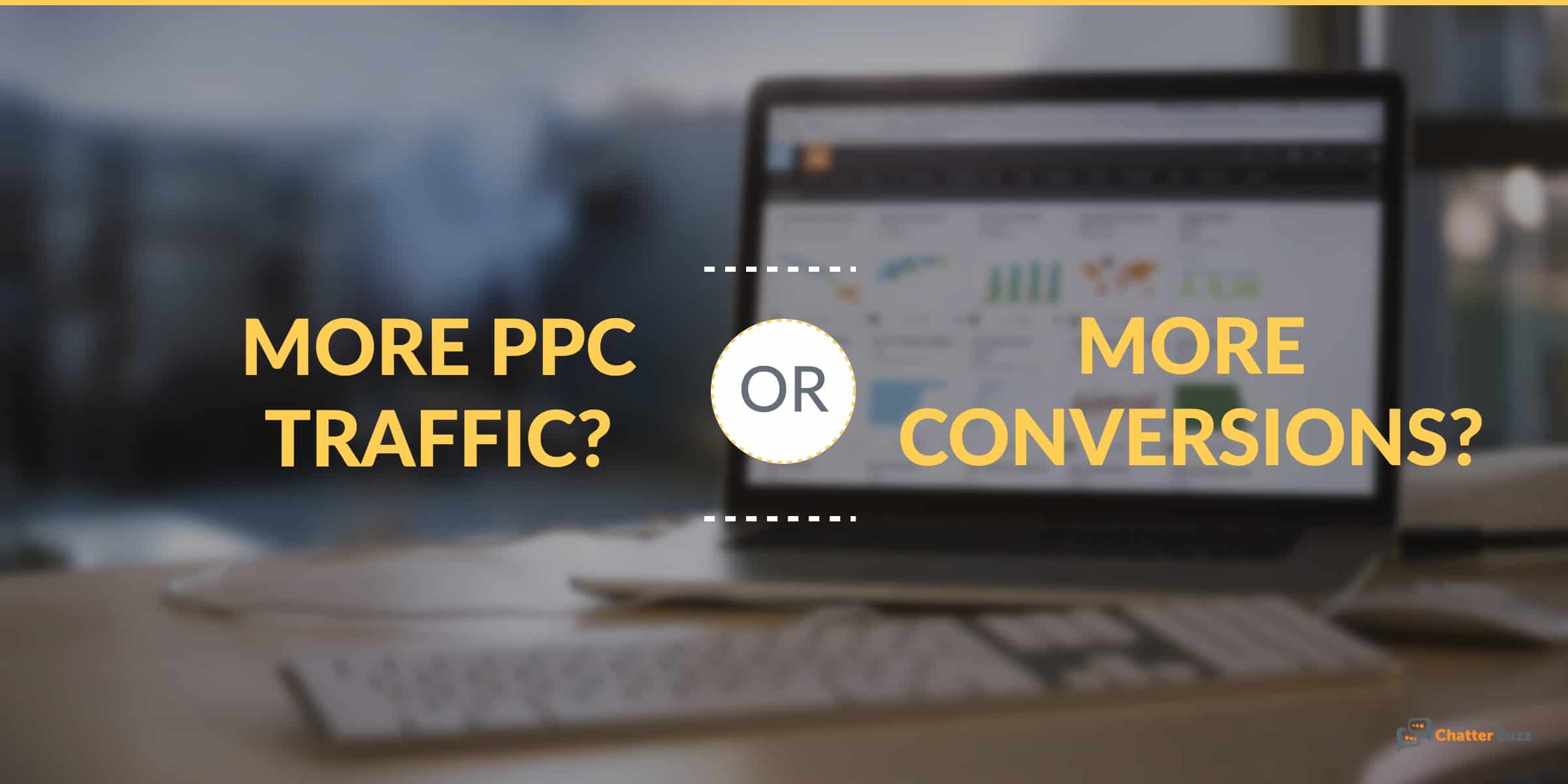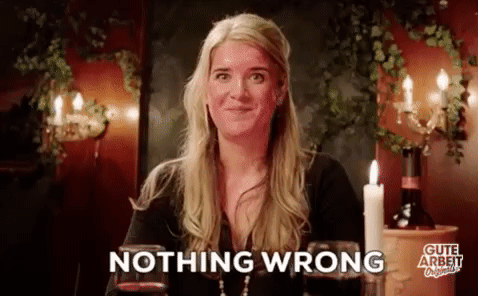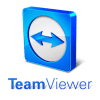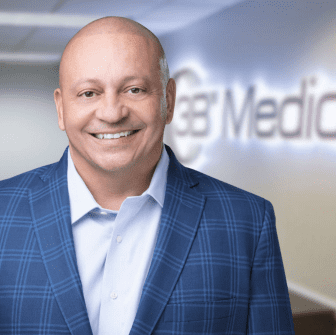More PPC Traffic or More Middle of the Funnel Conversions? Which Option is Best for You

Look, I’m sure you’ll agree that every marketer in a growing business eventually reaches this crossroads:
Should I double down on my traffic generation efforts? Or
Is it better for me to work to maximize the leads I already have in my pipeline?
It’s a complicated question with high stakes: choosing the wrong option might mean your pipeline freezes up, your brand reputation suffers, or worse:
You completely lose your positive momentum and growth comes to a screeching halt.
If you’re facing the question of focusing on lead generation or conversion optimization, you’ll love what I have for you here:
This post shows you how to evaluate both strategies and determine which makes the most sense for your business at this stage of your growth.
Intrigued? Then let’s get started.
Here’s When You Need to Pour Your Efforts into Generating More Leads through Paid Search
I’ll admit, it seems like lead generation should be one of those things you’re always doing as a marketer.
After all, the more leads the better, right?
Mmm..not quite.
In fact, the truth is, allocating the majority of your budget toward lead generation only makes sense at certain times in your company’s growth.
For example:
1. When You’re Still Unsure About The Quality of Your Traffic
Fact: the average paid search account wastes 76 percent of its budget on the wrong keywords.
Pretty crazy, right?
That means for every dollar you spend, over 75 cents gets flushed down the drain.
And that’s a huge problem for a growing business that depends on quality leads coming into their pipeline.
But here’s the thing – most marketers don’t even know it’s happening.
That same study showed only a little of 25 percent of AdWords marketers have any sort of meaningful conversion tracking in place.

So that means nearly 75 percent of marketers see a high volume of leads and think something like this:

But of course, that’s not the case.
Instead, what’s happening is you’re getting a lot of traffic, but your conversion rate is piss poor.
Which might make you think:
Well, shouldn’t I focus on conversion optimization, then?
Sorry, but no – that would be “putting the cart before the horse,” as they say.
2. Before you can even think about conversion optimization, you need to make sure your salespeople have the right leads to actually convert.
So how do I know whether I’m getting quality traffic through paid search campaigns?
Track conversions.
This one should be obvious considering what I’ve shared so far.
But just to be clear, tracking conversions gets you invaluable data about the success of certain keywords (and the campaigns where you used them).
Salil Panikkaveettil explains it perfectly on the Adnabu blog:
“Once we have enough data on which keywords work better for your website (these keywords will have a higher conversion ratio), We can then optimize the campaigns to maximize conversions instead of just focusing on clicks. It is very common to see some keywords having 3-4 times better conversion ratio than low intent keywords. it is therefore wise to spend more money on these high converting keywords than the ones which have a very low conversion ratio.”
Pay attention to time-on-page data.
Your AdWords account provides some valuable metrics for measuring the effectiveness of your paid search strategy.
At the end of the day, clicks are a vanity metric with no real substantial value.
Focusing instead on metrics like “Average Time on Page,” “Bounce Rate,” and “Average Session Duration” tell you whether the traffic you’re driving to your site is actually interested in the content you’re sharing.

If your conversion rate is high and the “Average Time on Page” indicates keywords are driving the right visitors to your site, there is, of course, a second reason you might focus on lead generation:
3. You Simply Need More Leads
Seems obvious, I know.
But if your reps are twiddling their thumbs waiting for more leads to come into the pipeline (and they’re doing a great job of converting the traffic you’re already getting), then by all means:
Invest in your lead generation strategy.
But, the truth is, it’s far more likely that once you’ve refined your paid search strategy and can put that on auto-pilot, you’re going to want to turn your attention toward CRO.
And Here’s When You Should Focus on Maximizing Your Conversion Rate in the Middle of the Funnel
Conversion rate optimization is a true team effort.
Marketers need to put the right mechanisms in place to turn site visitors into qualified leads.
And salespeople need to do what they do best and convert those leads into customers.
But how do you know when it’s the right time to focus on CRO?
1. When Your Current PPC Strategy is Driving the “Right” Traffic to Your Site
Of course, if the wrong traffic means focus on paid search, than the opposite is also true:
When you know you have the right traffic, turn your attention toward your conversion.
And while countless posts exist with sales strategies for improving conversions, there are a few things you can do to improve the conversions of visitors to your site:
Create landing pages specifically geared toward your target audience.
If you’re directing campaign traffic to your company homepage or some generic landing page, you’re undoubtedly missing out on the opportunity to convert more leads with a custom landing page.
For example, when I search in Google for “affordable app building software,” one of the ads is for Spiralogics.
And when I click the ad, I’m brought directly to this pricing page:

And considering the keywords I searched indicate I’m likely further down the sales funnel, there’s an easy conversion opportunity with starting a free trial.
Pretty smart, right?
But that’s not the only type of lead capture form that works:
Use lead capture forms to “gate” your most valuable content.
Picture this:
A lead clicks an ad you placed through a paid search campaign.
They find a great white paper you put together that addresses the exact problem your product services.
They download the paper, and then end up communicating with a competitor and doing business with them.
Sounds pretty awful, doesn’t it?
But it’s a problem many companies face that don’t gate their most valuable content.
Of course, you don’t want to put all your content behind a lead capture form. Instead, focus on the material that your most qualified leads are likely to read, like:
- White papers
- Webinars
- Case studies
- NOT infographics, blog posts, or videos
It’s also important to be aware of the length of your lead capture form.
Pam Neely explains why on the Act-On blog:
“How long the form is that you use to gate your content can also have an effect. As you know, generally the shorter a form is, the more likely people are to complete it. So requiring people to fill out a 20-field opt-in form is going to suppress engagement and leads more than a form that’s only three fields long. (But the people willing to jump through those many hoops might be the ones who need your solution the most.)”
2. When Your Traffic Funnel is One Smooth Machine
If you believe that you have closely perfect and optimized all your traffic generator campaigns then it is time for you to look into Conversion Rate Optimization.
Regardless if you are using an Omni-channel approach but you have covered all your basis then lets turn leads into sales.
How To Determine Which Option Makes More Sense for Your Business
I’ll admit, even with that framework in mind, it’s not entirely obvious which one is best for you.
That’s why you should review these questions with the rest of your marketing team, sales partners, and executive leadership to determine the right next play for your company:
- Have conversions grown, dropped, or plateaued over the last six months?
- Where is my traffic coming from? Does traffic match my target buyer persona?
- What percentage of my website do I gear toward adding value to my target audience versus my own interests (i.e. signing up for free trials)?
- Do I have a defined content strategy? If so, is it addressing the core problems of my audience?
Doing so will help you understand where your marketing strategy stands today and what you need to do to take things to the next level.
Closing Thoughts
Deciding the right path for marketing growth is never easy, but with this guide, I hope you feel more comfortable in determining whether focusing on paid search or conversion optimization makes more sense for you.
Do you need someone to help you achieve your growth goals - then let us help you crush them? Let's chat!
Error: Contact form not found.









